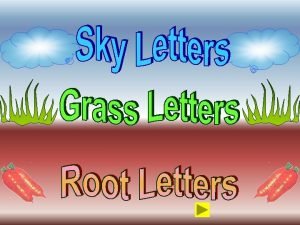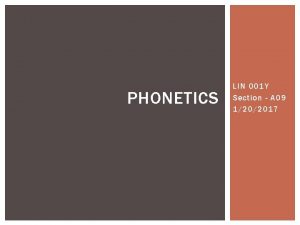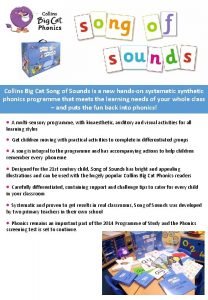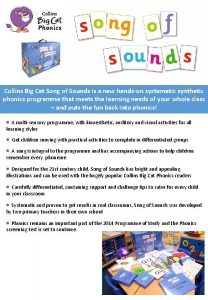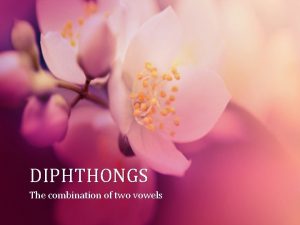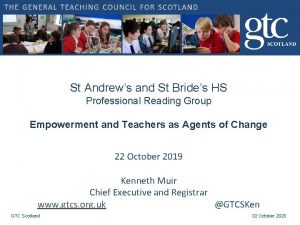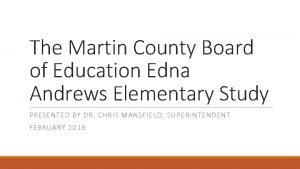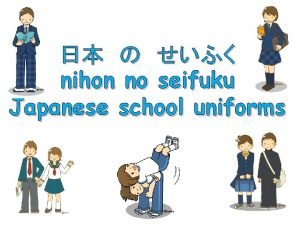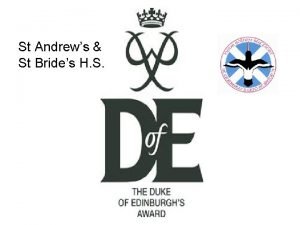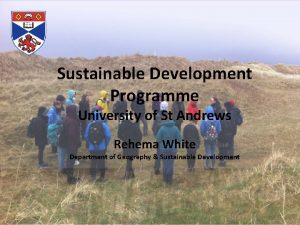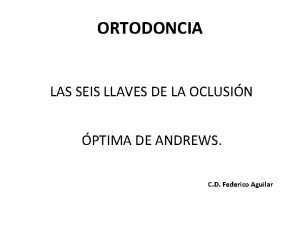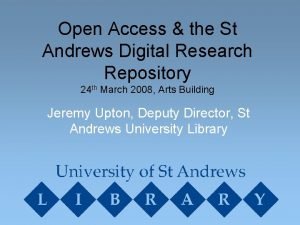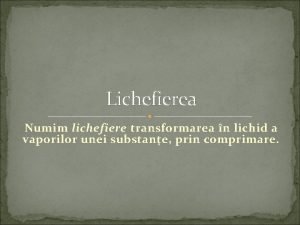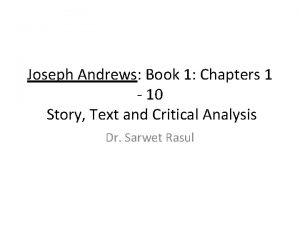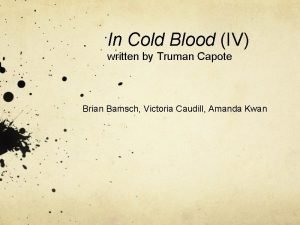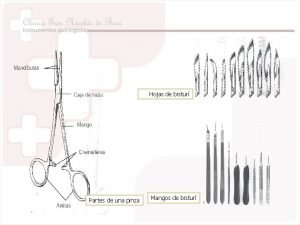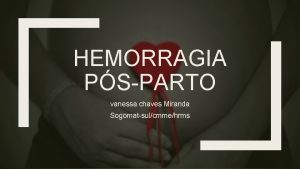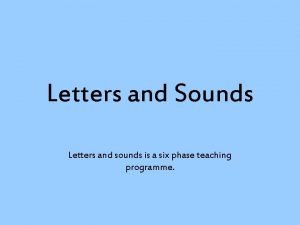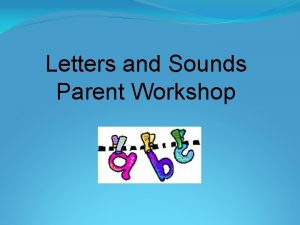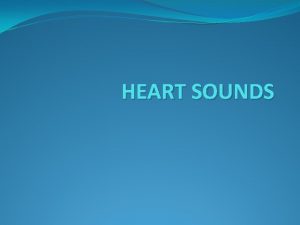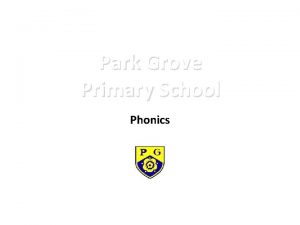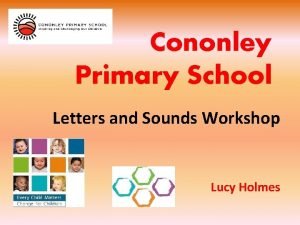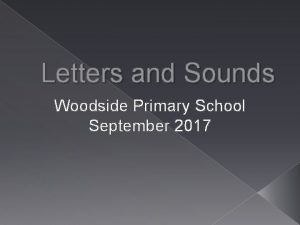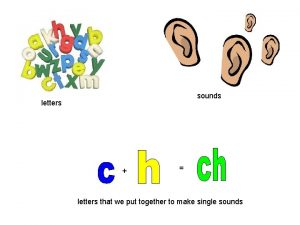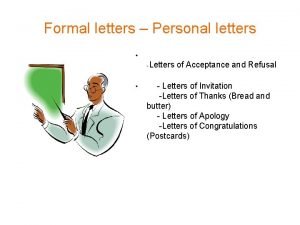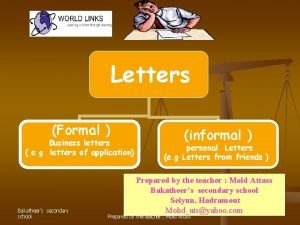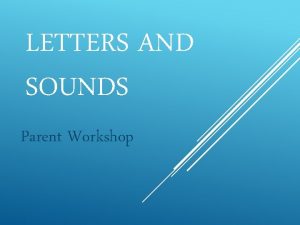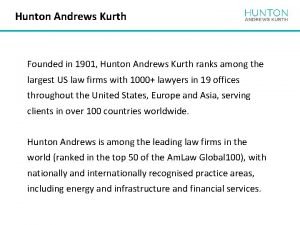St Andrews CE Primary School Letters and Sounds



















- Slides: 19

St Andrew’s CE Primary School Letters and Sounds How we learn “phonics” 11 th September 2012 Mrs D Leck

Enunciation • Phoneme – smallest unit of sound in a word. • Grapheme – a letter or sequence of letters that represents a phoneme.

• Sounds/phonemes are represented by letters • A phoneme can be represented by one or more letters e. g. Sh, th, ee, etc • The same phoneme can be represented/ spelled in more than one way e. g. rain, may, lake • The same spelling may represent more than one sound e. g. mean, deaf

Phase 1 • • Exploring with sounds and words. Recognise words that rhyme. Provide a string of rhyming words. Begin to show an interest in blending and segmenting.

Phase 1 • Ways you can support your children at home • Play ‘What do we have in here? ’ Put some toys or objects in a bag and pull one out at a time. Emphasise the first sound of the name of the toy or object by repeating it, for example, ‘c c – car’, ‘b b – box’, ‘ch ch – chip’. • Say: ‘A tall tin of tomatoes!’ ‘Tommy, the ticklish teddy!’ ‘A lovely little lemon!’ This is called alliteration. Use names, for example, ‘Gurpreet gets the giggles’, ‘Milo makes music’, ‘Naheema’s nose’. • Teach them ‘Peter Piper picked a peck of pickled peppers’. • Enjoy rhyming books. • Play with rhyming strings.

Phase 2 • Give the sound when shown any phase 2 letter (securing the first starter letters) s, a, t, p, i, n, o, • Can find a phase 2 letter on in the room, newspaper, book. • Be able to orally blend and segment cvc words. • Be able to blend and segment to read and spell using magnetic letters VC words such as: if, am, on, up, • Be able to read 5 tricky words. • Write each letter correctly when following a model.

Phase 2 sets of sounds • Sounds are introduced in sets v. Set 1: s a t p v. Set 2: i n m d v. Set 3: g o c k v. Set 4: ck e u r v. Set 5: h b f ff l ll ss

Using Phonics to support reading • Using Phonics to support reading • Can you sound these letters together • (eg paddle p-a-d = pad) Robot speak! • Are there any parts/chunks of the word you can • read? (eg fan-tas-tic) • What sound do these letters together make? • (eg sh igh ph) • Does it look right, does it match the letter sounds in the word? • ALWAYS USE PHONIC CUES ALONGSIDE CONTEXT OR • GRAMMATICAL CUES

Phase 2 • Ways you can support your children at home • Magnetic letters • Buy magnetic letters for your fridge, or for use with a tin tray. Find out which letters have been taught – have fun finding these with your child and place them on the magnetic surface. • Making little words together • Make little words together, for example, it, up, am, and, top, dig, run, met, pick. As you select the letters, say them aloud: ‘a-m – am’, ‘m-e-t – met’. • Breaking words up • Now do it the other way around: read the word, break the word up and move the letters away, saying: ‘met – m-e-t’. • Both these activities help children to see that reading and spelling are reversible processes. • Don’t forget the writing box! • Spelling is harder than reading words – praise, don’t criticise. Little whiteboards and pens, and magic boards, are a good way for children to try out spellings and practise their handwriting.

Phase 3 • Give the sound when shown all or most phase 2 and 3 graphemes (inc: ch, sh, th, ng, ai, ee, igh, oa, oo) • Finds the graphemes from a display when given a sound. • Be able to blend and read cvc words (ie single syllable words consisting of phase 2 and 3 graphemes). • Be able to segment and make a phonetically plausible attempt at spelling harder words using graphemes from phase 2 and 3. • Read another 12 tricky words. • Be able to spell tricky words: the, to, I no, go • To know the alphabet song when pointing to the letters.

Phase 3 v Letter progression and graphemes continued v Set 6: j v w x v Set 7: y z zz qu v Set 8: ch sh th ng v Teach: ai ee igh oa oo ar or ur ow oi ear air ure er

Phase 3 • Ways you can support your children at home • Sing an alphabet song together. • Play ‘I spy’, using letter names as well as sounds. • Continue to play with magnetic letters, using some of the two grapheme (letter) combinations: • Praise your child for trying out words. • Ask teachers for a list of the tricky words. • Set a timer. Call out one word at a time and get your child to spell it on a magic board or a small whiteboard, against the timer – remember, they can use magnetic letters. • Play ‘Pairs’, turning over two words at a time trying to find a matching pair. This is especially helpful with the tricky words: the, to to, no no, go go, I I • Don’t worry if they get some wrong! These are hard to remember – they need plenty of practise.

Phase 4 • • Give the sound when shown all or most phase 2 and 3 graphemes (inc: ch, sh, th, ng, ai, ee, igh, oa, oo) Finds the graphemes from a display when given a sound. Be able to blend and read words containing adjacent consonants. For example, in the word ‘toast’, t = consonant, oa = vowel, s = consonant, t = consonant. and CCVC words: swim, plum, sport, cream, spoon Be able to segment and spell words containing adjacent consonants. Be able to read another 14 key words. Be able to spell up to 20 key words. Write each letter, usually correctly.

Phase 4 • Ways you can support your children at home • Practise reading and spelling some CVCC and CCVC words but continue to play around with CVC words. Children like reading and spelling words that they have previously worked with, as this makes them feel successful. • Make up captions and phrases for your child to read and write, for example, a silver star, clear the pond, crunch crisps. Write some simple sentences and leave them around the house for your child to find and read. • Look out for words in the environment, such as on food packaging, • Work on reading words together, for example, a street name such as Park Road, captions on buses and lorries, street signs such as bus stop.

Phase 5 • Give the sound to any grapheme that has been taught. • For any given sound, write the common grapheme. • Magic a_e: made, cake, e_e: Pete, gene, Steve, i_e, o_e and u_e • Apply phonic knowledge and skills as the prime appraoch to reading and spelling unfamiliar words that are not completely decodable. • Read and spell decodable words. • Read automatically all the 100 high frequency words. • Spell most of the 100 HFWs • Form each letter correctly.

Phase 5 activities: • Sentence substitution: The girl came home on the train. bird bus went boy

Phase 5 Further Teaching of Graphemes: ay – day oy – boy wh – when a-e make ou – out ir – girl ph – photo e-e these ie – tie ue – blue ew – new i-e like ea – eat aw – saw oe- toe o-e home Au – Paul u-e rule

Phase 6 READING: • Longer and less familiar texts. • Greater familiarity with graphemes. • Increased number of words which can be read automatically. • Greater emphasis on developing a range of comprehension strategies. SPELLING: • Continue to segment words into phonemes but developing accuracy through making informed choices of graphemes where there alternatives. • Learn conventions for adding common suffixes eg - ed. • Develop strategies for independent spelling and proof reading.

Phonics Screening In June we are required to complete a phonics screening check of the children in year 1. They children have to read 40 words that are made up of 20 non-words and 20 real words. The purpose of this test is to see how well the children can decode words in order for them to read them. It is expected that we aim for the children to reach phase 5 sounds by the end of year 1. This skill is imperative to aid the children to read and write in future years. v Year 1 screening video
 Grass letter a
Grass letter a Oral sounds and nasal sounds
Oral sounds and nasal sounds Difference between sound and letter
Difference between sound and letter Letters and sounds reception
Letters and sounds reception Big cat song
Big cat song Big cat song
Big cat song Diphthongs and examples
Diphthongs and examples Coaching wheel gtcs
Coaching wheel gtcs Edna andrews school hamilton nc
Edna andrews school hamilton nc Japanese school hats
Japanese school hats St andrews and st brides
St andrews and st brides St andrews sustainable development
St andrews sustainable development Chris andrews northwestern mutual
Chris andrews northwestern mutual Llave 1 de andrews
Llave 1 de andrews St andrews thesis repository
St andrews thesis repository Lichefierea
Lichefierea Joseph andrews chapter wise summary pdf
Joseph andrews chapter wise summary pdf Don cullivan in cold blood
Don cullivan in cold blood Pinza tenaculo de lahey
Pinza tenaculo de lahey Manobra de brandt-andrews
Manobra de brandt-andrews
